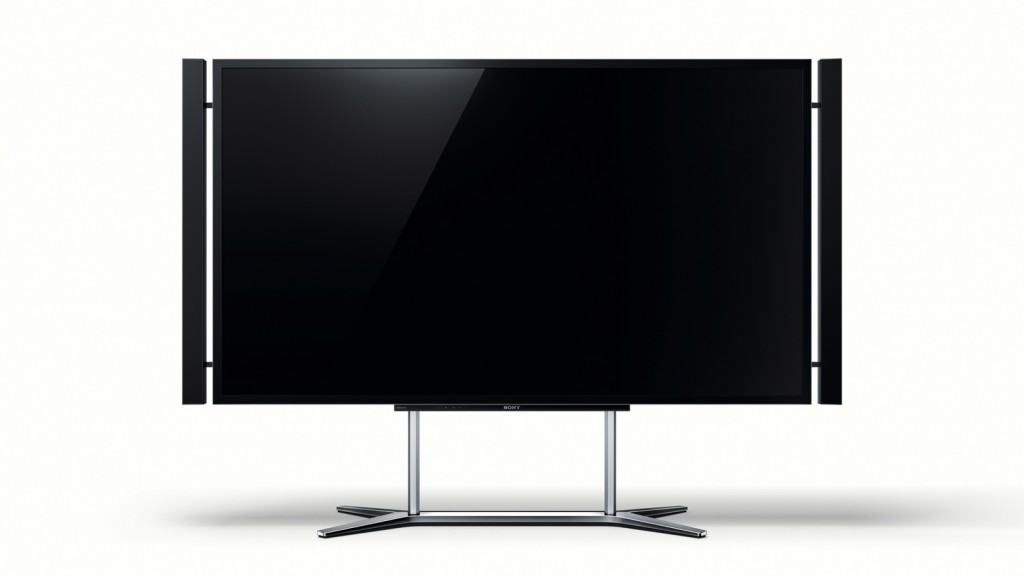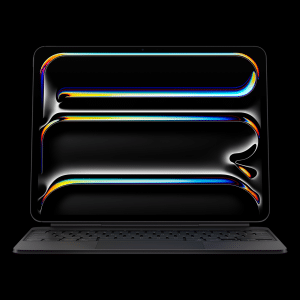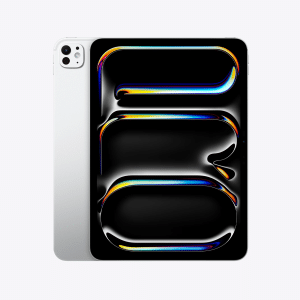You may be in the market for a big-screen TV, whether your first or an upgrade.
The good news is that you can find jumbo-sized sets with compelling features at prices that a couple of years ago would have been unthinkable. Some 60-inch TVs, for example, cost less than $750.
The bad news is that you’ll still have to pay a pretty penny for the largest TVs or those with the newest capabilities. What’s more, you may want to wait because the discounts generally are only on last year’s models, and this year’s versions only now are starting to hit stores.
With that in mind, here are some tips on picking out your next TV:* Features to pay for: The most important is screen size. In general, the larger the screen, the more immersive the experience. And thanks to declining prices, you may be able to afford a very large television. Sixty-inch sets now cost about what a 46-inch television did two years ago. And 55-inch sets cost even less, as little as $600 in some cases.
Another key feature to pay attention to is the refresh rate, which is the frequency at which the images are redrawn on a television’s screen. LCD televisions – of which so-called LED TVs are a subset – tend to have a problem displaying fast-moving images, such as those that happen during a football game. The faster the set’s refresh rate, the less likely you’ll run into so-called motion blur. In general, you should look for sets with a 120 Hz refresh rate or faster.
Jim Wilcox at Consumer Reports says it’s also worth it to pay extra for a set from a major brand. While you can find decent sets among secondary and off-brands, the picture quality of those televisions is much more inconsistent than with TVs from companies such as Sony, Samsung or LG. While the difference in price between a major brand TV and a minor one may be a few hundred dollars, that amount may not seem so much if you factor in the length of time you’re likely to hold on to the TV.* Less important features: If a set you like includes 3-D viewing, great. But don’t pay up to buy a set with the feature. The technology still faces many of the same problems that have plagued it all along – namely that there’s little content that’s available in 3-D, and to enjoy a 3-D experience, everyone in the room has to be wearing the silly-looking glasses, which can cost as much as $50 each.
Another feature you shouldn’t pay extra for is the ability to play apps or access Internet content, features generally referred to collectively as “smart TV” capabilities. You can get many of the same features – and often access to more content – with digital media adapters such as Google’s Chromecast and Apple TV. Such devices cost anywhere from $35 to $100; if you spend more than that for a smart TV, you’ve spent too much.* The best bargains: The best- priced televisions are generally those that are 60 inches or smaller. While you won’t find many 60-inch models for less than $800, you’ll find a wide selection of them for under $1,000, and you can find high-end models, with smart TV features, a 240 Hz refresh rate and 3-D viewing capabilities, for as little as $1,300.
The prices get even better as you go smaller. You’ll find a few 46-inch models from secondary brands for less than $400, and quite a few mainstream models for less than $600. You can find 32-inch sets for less than $200 and 22-inch models, which might work in a kitchen or a small bedroom, for $150.
You’ll also find some really good deals on plasma TVs. While many cinema buffs love the picture plasma TVs offer, the sets long ago lost out to LCD TVs and are being phased out of the market. Thanks to that, many of them are dirt cheap. Best Buy late last month had a 51-inch set for just $500.* Giant size equals giant price: As you go up from 60 inches, TVs start to get really pricey. While I found a 65-inch television model for around $1,000, that was an exception. Most of them start around $1,300 or $1,400 and go up rapidly from there. And 70-inchers and above are even pricier. In fact, you can expect to pay $500 to $1,000 more for a 70-inch model than you’d pay for a comparably equipped 60-inch TV.* If you can wait, do: You often can find the very best deals on TVs in February. That’s because retailers typically start receiving the first of the new model year sets at the end of February and the beginning of March. To make room for those new TVs, they’ll frequently slap big discounts on last year’s models.
Some retailers will give customers a refund if they discount a TV model within several weeks of purchase. But to get that discount, the customers need to pay attention to the company’s pricing – and visit the store to claim their refund.
And there’s another reason to wait, particularly if you want a set that’s on the cutting edge. The new premium televisions often have enhanced features, such as refined smart TV interfaces or more extensive app offerings. You’ll also see models with curved screens, a wider selection of ultra-high-resolution 4K displays, and a few new OLED models.
You may be in the market for a big-screen TV, whether your first or an upgrade.
The good news is that you can find jumbo-sized sets with compelling features at prices that a couple of years ago would have been unthinkable. Some 60-inch TVs, for example, cost less than $750.
The bad news is that you’ll still have to pay a pretty penny for the largest TVs or those with the newest capabilities. What’s more, you may want to wait because the discounts generally are only on last year’s models, and this year’s versions only now are starting to hit stores.
With that in mind, here are some tips on picking out your next TV:[bullet] Features to pay for: The most important is screen size. In general, the larger the screen, the more immersive the experience. And thanks to declining prices, you may be able to afford a very large television. Sixty-inch sets now cost about what a 46-inch television did two years ago. And 55-inch sets cost even less, as little as $600 in some cases.
Another key feature to pay attention to is the refresh rate, which is the frequency at which the images are redrawn on a television’s screen. LCD televisions – of which so-called LED TVs are a subset – tend to have a problem displaying fast-moving images, such as those that happen during a football game. The faster the set’s refresh rate, the less likely you’ll run into so-called motion blur. In general, you should look for sets with a 120 Hz refresh rate or faster.
Jim Wilcox at Consumer Reports says it’s also worth it to pay extra for a set from a major brand. While you can find decent sets among secondary and off-brands, the picture quality of those televisions is much more inconsistent than with TVs from companies such as Sony, Samsung or LG. While the difference in price between a major brand TV and a minor one may be a few hundred dollars, that amount may not seem so much if you factor in the length of time you’re likely to hold on to the TV.[bullet] Less important features: If a set you like includes 3-D viewing, great. But don’t pay up to buy a set with the feature. The technology still faces many of the same problems that have plagued it all along – namely that there’s little content that’s available in 3-D, and to enjoy a 3-D experience, everyone in the room has to be wearing the silly- looking glasses, which can cost as much as $50 each.
Another feature you shouldn’t pay extra for is the ability to play apps or access Internet content, features generally referred to collectively as “smart TV” capabilities. You can get many of the same features – and often access to more content – with digital media adapters such as Google’s Chromecast and Apple TV. Such devices cost anywhere from $35 to $100; if you spend more than that for a smart TV, you’ve spent too much.[bullet] The best bargains: The best-priced televisions are generally those that are 60 inches or smaller. While you won’t find many 60-inch models for less than $800, you’ll find a wide selection of them for under $1,000, and you can find high-end models, with smart TV features, a 240 Hz refresh rate and 3-D viewing capabilities, for as little as $1,300.
The prices get even better as you go smaller. You’ll find a few 46-inch models from secondary brands for less than $400, and quite a few mainstream models for less than $600. You can find 32-inch sets for less than $200 and 22-inch models, which might work in a kitchen or a small bedroom, for $150.
You’ll also find some really good deals on plasma TVs. While many cinema buffs love the picture plasma TVs offer, the sets long ago lost out to LCD TVs and are being phased out of the market. Thanks to that, many of them are dirt cheap. Best Buy late last month had a 51-inch set for just $500.[bullet] Giant size equals giant price: As you go up from 60 inches, TVs start to get really pricey. While I found a 65-inch television model for around $1,000, that was an exception. Most of them start around $1,300 or $1,400 and go up rapidly from there. And 70-inchers and above are even pricier. In fact, you can expect to pay $500 to $1,000 more for a 70-inch model than you’d pay for a comparably equipped 60-inch TV.[bullet] If you can wait, do: You often can find the very best deals on TVs in February. That’s because retailers typically start receiving the first of the new model year sets at the end of February and the beginning of March. To make room for those new TVs, they’ll frequently slap big discounts on last year’s models.
Some retailers will give customers a refund if they discount a TV model within several weeks of purchase. But to get that discount, the customers need to pay attention to the company’s pricing – and visit the store to claim their refund.
And there’s another reason to wait, particularly if you want a set that’s on the cutting edge. The new premium televisions often have enhanced features, such as refined smart TV interfaces or more extensive app offerings. You’ll also see models with curved screens, a wider selection of ultra-high-resolution 4K displays, and a few new OLED models.












